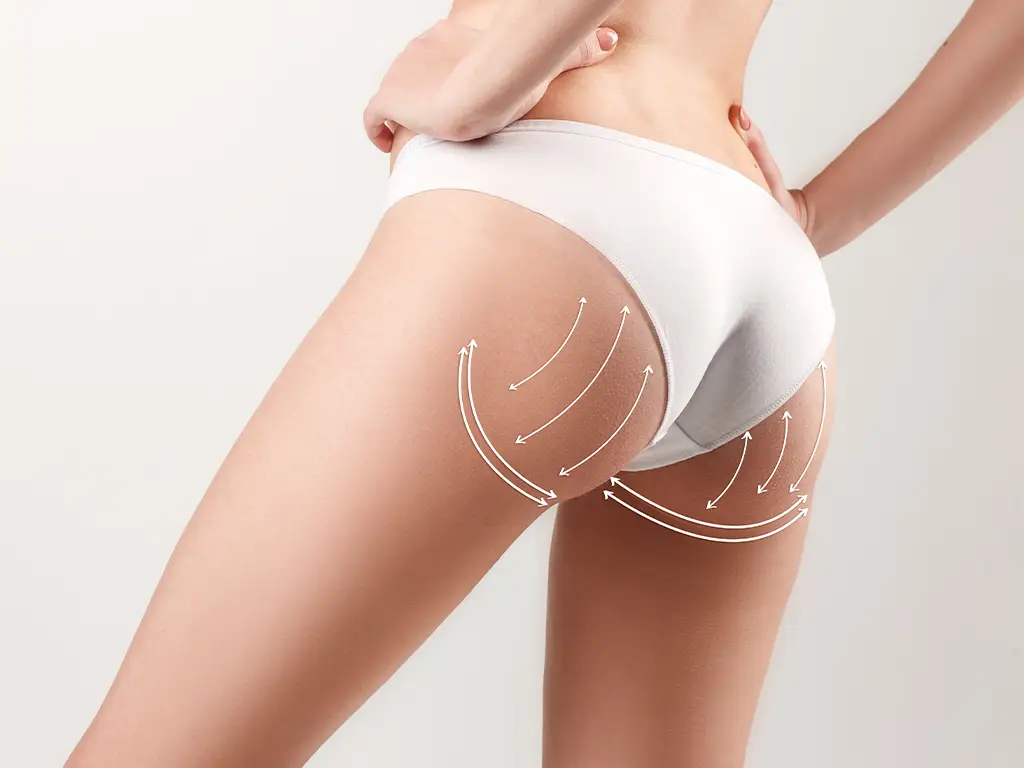Buttock augmentation with buttock prosthesis is a surgical procedure performed to increase the volume and shape of the buttock.
Accomodation
Operation Duration
Recovery Duration
Follow-Up Visit
Buttock augmentation, also known as gluteal enhancement, is a cosmetic surgery procedure aimed at improving the size, shape, and contour of the buttocks. This procedure is performed to create a fuller, more lifted appearance, and it is popular among individuals who are dissatisfied with the natural shape or size of their buttocks. The most common techniques for buttock augmentation include fat transfer (commonly referred to as a Brazilian Butt Lift or BBL) and buttock implants.
Buttock augmentation is typically chosen for several reasons, including:
This procedure can provide an enhanced feminine silhouette, boost self-confidence, and improve overall body harmony.

Buttock Augmentation Techniques
There are two main methods used for buttock augmentation:
This technique involves harvesting fat from other areas of the body, such as the abdomen, thighs, or hips, and injecting it into the buttocks. The steps include:
Fat transfer offers a natural look and feel, and because the patient’s own fat is used, the risk of rejection is minimal. However, not all the transferred fat survives, and some patients may require additional procedures to achieve the desired outcome.
In cases where a patient does not have enough excess fat for a BBL, silicone implants are used to enhance the size and shape of the buttocks. The steps include:
Implants provide a more predictable result in terms of size and shape, but the procedure carries a higher risk of complications compared to fat transfer.
The recovery process after buttock augmentation varies based on the method used:
Fat Transfer (BBL): Recovery typically takes several weeks. Patients must avoid sitting directly on the buttocks for at least 2-4 weeks to ensure optimal fat retention. Special cushions or techniques may be used to minimize pressure on the buttocks during healing.
Buttock Implants: Recovery can take longer, and patients may experience more discomfort due to the placement of the implants under the muscle. As with BBL, sitting must be avoided for a certain period to allow proper healing.
In both cases, swelling, bruising, and discomfort are common in the first few days but should improve gradually. Compression garments are often recommended to reduce swelling and support the newly shaped buttocks during the healing process.
The results of buttock augmentation are generally long-lasting, but individual outcomes may vary. In the case of fat transfer, not all of the transferred fat cells will survive, so some reduction in volume is expected. With implants, the results are more stable, but implants may need to be replaced or adjusted over time due to aging or complications.
Maintaining a stable weight and following a healthy lifestyle can help prolong the results of the procedure.
As with any surgical procedure, buttock augmentation carries risks, including:
Choosing a qualified, experienced surgeon and following post-operative care instructions can minimize these risks.
Ideal candidates for buttock augmentation:
There is no specific age limit for buttock augmentation, but candidates should have a stable weight and a healthy lifestyle to maximize the longevity of the results.
Buttock augmentation offers an effective way to enhance the size and shape of the buttocks, providing a fuller and more aesthetically pleasing silhouette. Whether through fat transfer or implants, the procedure can help individuals achieve their desired look. As with any cosmetic surgery, it is important to consult with a qualified surgeon, discuss realistic expectations, and understand the risks and benefits before proceeding.

ŞANSEL KAVLAKOĞLU SAĞLIK HİZMETLERİ LİMİTED ŞİRKETİ
İzzet Paşa Mah Yeni Yol Cad. No:22/A Nurol Tower Plaza Kat:11 No: 1103 Şişli, İstanbul, Turkey
Mednificant holds an international health tourism accreditation. Our affiliated hospitals and clinics are accredited to both national and international standards, and all treatments are provided at these accredited health facilities.